 November 12, 2021 John E. Ross, KD8IDJ, Editor
| ||||||
AMSAT-NA Elects Officers, Discusses Ongoing and Future Satellite Projects AMSAT-NA President Robert Bankston, KE4AL, told the 2021 AMSAT Dr. Tom Clark, K3IO, Memorial Space Symposium on October 30 that the organization is looking ahead to future satellite missions but will "go commercial" in order to keep enough satellites in space. Bankston, who was re-elected at a virtual Board meeting on October 29, said AMSAT is in solid financial position and donations are "healthy." Vice President-Development Frank Karnauskas, N1UW, noted that, despite AMSAT's solid financial standing, additional funds are needed to design, build, and launch satellites. Consequently, AMSAT is ramping up its grant-writing efforts, applying for grants from philanthropic organizations and corporate sponsors. Bankston said AMSAT's strategic plan prioritizes putting satellites into high-Earth orbits. He also summarized the GOLF (Greater Orbit, Larger Footprint) initiative as part of its plan to reach higher orbits. Bankston said purchasing commercial satellites can shorten the development time. AMSAT plans to purchase a v/U 1U FM CubeSat, powered by four lithium-ion cells, but the Board said 90% of funding would have to be obtained from external sources. This would not be a permanent approach, however. Bankston said the organization will be seeking additional volunteers to put its plans into action. "Any expansion of the strategic plan will need more volunteers," Bankston said, adding that current volunteers "are pretty much at full bandwidth."
Vice President-Engineering Jerry Buxton, N0JY, reviewed satellite projects in the pipeline. These include providing a linear transponder module to the University of Maine for its MESAT1, set to launch in 2022. The GOLF-TEE (Technology Evaluation Environment) CubeSat is under construction and has been added to a launch manifest tentatively for summer of 2022. Supply chain issues are impacting construction. GOLF-1 is planned for delivery 1 year after the completion of GOLF-TEE. Bankston mentioned new regulations that will govern satellite launches in the future. The Orbital Debris Assessment Regulations (ODAR) complicate the design and licensing of the GOLF 3U platforms, however. The 2021 AMSAT Dr. Tom Clark, K3IO, Memorial Space Symposium and Annual General Meeting is available on AMSAT's YouTube channel. Read an expanded version. DXpeditioner Says Operating from Crozet is Limited by Nature The recent announcement of a pending 3-month DXpedition to activate Crozet Island (FT5W) in 2022 - 2023 has generated enthusiasm within the DX community. Right on the heels of the announcement, the Northern California DX Foundation (NCDXF) pledged $20,000 to support the DXpedition. The point person for the planned event, Thierry Mazel, F6CUK, wants to temper any overblown expectations, "The wind blows almost constantly at 70 kilometers per hour (43 MPH), with gusts that can reach 150 kilometers per hour (93 MPH) within a few minutes," Thierry and co-planner Paul Granger, F6EXV, said in a recent news release. "There are no real seasons on Crozet, so these conditions apply all year long, even if, during the austral summer, nicer days can be expected." Added to the possibility of gale or hurricane-force winds, the "fairly hard" volcanic rock that covers the archipelago and "very strict rules" in place to protect fauna and flora, will severely restrict the sorts of antennas that might be deployed. "For bird protection, antennas, guy wires, and anything that could be an obstacle are forbidden," Thierry and Paul said. Just securing guy lines for a four-square would require more than 30 concrete blocks, [because] digging holes is not permitted. The original idea to erect four-square arrays for 40 and 20 meters was refused, they said. The French Austral Islands are United Nations Educational, Scientific, and Cultural Organization (UNESCO) World Heritage sites and declared as protected areas. "The only possibility that the administration allowed, was to have an [antenna] attachment point to an existing building and have wire
antennas from there," they said. "No beam! This is clearly stated in the permit we received." As if those weren't enough roadblocks, any equipment brought onto the island must be thoroughly cleaned to prevent the introduction of pollen, seeds, or non-native organisms. DXpedition planners are pondering the "best solution for the best antenna possible." The last ham radio activity from Crozet was in 2009 by Florentin Bard, F4DYW, who operated as FT5WQ. Contrary to earlier accounts, the DXpedition has not announced its call sign, which will not be made public in advance. The solo DXpedition in 2022 - 2023 is anticipated to cost as much as $58,000. The Twitter account is @crozet2022, and a website is expected to be online soon. When it's up and running, it will include details of how donated funds will be applied. Thierry has pledged that all contributions will be refunded if the operation does not take place. December 2021 Issue of QST to Mail Mid- .jpg) Month, Arrive Thanksgiving Week Month, Arrive Thanksgiving WeekDue to the widespread paper shortage and related supply chain issues, the December 2021 issue of QST will mail approximately one week later than usual, arriving in homes the week of November 22. ARRL members can read the digital edition of the December issue now. ARRL Podcasts Schedule
The latest edition of the Eclectic Tech podcast (Episode 46) features a discussion about The On the Air and Eclectic Tech podcasts are sponsored by Icom. Both podcasts are available on iTunes (iOS) and Stitcher (Android) as well as on Blubrry -- On the Air | Eclectic Tech. October 2021 Volunteer Monitor Program Report The Volunteer Monitor (VM) Program is a joint initiative between ARRL and the FCC to enhance compliance in the Amateur Radio Service.
The final totals for monitoring in September were 1,909 hours on HF frequencies and 2,716 hours on VHF frequencies and above, for a total of 4,625 hours. There was one recommendation to the FCC for case closure and renewal of a license, and one request to review a license application. The FCC referred two cases to the VM Program. -- VM Program Administrator Riley Hollingsworth, K4ZDH Space Physics Professor Seeks Radio Amateurs' Help in Making Space Physics Data Audible Space Physicist Martin Archer of Imperial College London wants to know the best approach to making space physics data audible. Archer is the UKRI (UK Research and Innovation) Stephen Hawking Fellow in Space Physics and Public Engagement and is working in the fields of citizen science and data sonification. He is seeking individuals to complete a survey, the results of which may help him to determine the best way to give space physics data a voice.
"Our sense of sound can be a powerful tool in exploring and analyzing data collected from satellites. But what is the best way to make this data audible?" Archer asks. Space science researchers at Imperial College London are asking for input from communities with relevant expertise -- such as those involved with audio, citizen science, music, public engagement, and science communication. HamSCI Founder Nathaniel Frissell, W2NAF, believes the list could also include radio amateurs. "Given the connection between radio propagation and geomagnetic disturbances, along with the fact that hams are so used to listening to signals in noise, we think the amateur community would have valuable input," he said. Specifically, the project seeks the best method of making ultra-low-frequency waves around Earth audible. Archer believes feedback from radio amateurs and others could help space scientists to improve science communication, public engagement, and citizen science. Completing the survey should take no longer than 10 minutes. A participant information sheet offers greater detail. Direct questions should be sent to Archer via email. ARRL Learning Network Webinars
More webinars coming soon! ARRL members may register for upcoming presentations and view previously recorded Learning Network webinars. ARRL-affiliated radio clubs may also use the recordings as presentations for club meetings, mentoring new and current hams, and discussing amateur radio topics. The ARRL Learning Network schedule is subject to change. Amateur Radio in the News ARRL Public Information Officers, Coordinators, and many other member-volunteers help keep amateur radio and ARRL in the news.
Share any amateur radio media hits you spot with us. Announcements
The Radio Club of America (RCA) QSO Party is set for November 13 - 14, 2021, to mark the 100th anniversary of the first successful effort to span the Atlantic via ham radio in December 1921. The event is open to all hams and shortwave listeners and will operate on 160, 80, 40, 20, 15, and 10 meters. Participants contacting RCA's club station W2RCA will earn bonus points. Somalia is back on the air, with Ali Solhjoo, EP3CQ, at the helm at 6O1OO. He works for the UN in Mogadishu and has been reported on 30 meters using FT4/FT8. He has indicated that he will be active on all bands except 160. 6O1OO is the only active amateur station in Somalia. Ireland's IRTS News report that four internet-accessible KIWI-SDR receivers are again available in Iceland, covering 10 kHz - 30 MHz.
Radio Amateurs in Brazil Help with Rescue Operation Brazil's National Amateur Radio Emergency Network Coordinator Hilton Libanori, PY2BBQ, reports that São Paulo State Network of Emergency Radio Amateurs (REER-SP) volunteers were directly involved in a search-and-rescue operation with the São Paulo State Fire Department, after a cave collapsed on October 31 during a rescue exercise in Altinópolis. Twenty-eight civil firefighters were carrying out an exercise in the Duas Bocas Cave when part of the cave collapsed, "To overcome this distance, it was necessary to walk between 30 and 40 minutes along a narrow trail in dense forest," Libanori said. "The REER-SP volunteers involved started the work in the early hours of the morning, continuing until 8 PM. The participation of radio amateurs was effective, providing infrastructure and radio equipment to facilitate communication between the [command post] and the rescue teams, who were out of contact due to lack of telephone or internet signal. The support of radio amateurs made operations more agile, enabling the command to receive and transmit messages directly to the rescue team." More than 12 individual radio amateurs had a direct role in the rescue operation, with the support of dozens of hams, who supplied the teams with information and technical data. Both the national and state emergency networks are administered by the Civilian Defense, in each level, with the aid of Brazil's national amateur radio organization LABRE (Liga de Amadores Brasileiros de Rádio Emissão). Dominican Radio Club Participates in Successful Earthquake Evacuation Simulation Radio amateurs were involved in a recent exercise in the Dominican Republic to prepare the Dominican population for responding to an evacuation process in the event of an earthquake. Members of the Radio Club Dominicano, HI8RCD, participated in the drill. The club reports that a team of radio amateurs promptly assembled and activated a repeater, the effort serving as practice and a demonstration The Dominican government, through the Emergency Operations Center (EOC), carried out the successful simulation and national evacuation drill, which achieved all eight of its objectives. The prime objective was to exercise the contingency plan in case of an earthquake. The goal was to strengthen preparation and response of public and private institutions as well as the population should there be an earthquake, considering the additional complications imposed by the COVID-19 pandemic. In addition, the exercise was aimed at validating the activation mechanism of the EOC if a seismic event were to occur; verify the evacuation process for public, private, and family institutions; review the activation procedure of such specialized response groups as urban search-and-rescue and emergency medical teams; ratify the procedure for activating the emergency telecommunications mechanism; verify the installation of one mobile hospital; supervise the installation and operation of a mobile command post, and examine the tsunami communication protocol between ONAMET (the Dominican Republic's national weather service), the National Seismology Center, and the EOC in the case of an early tsunami warning. Within the framework of the drill, the population reported their participation through a digital platform designed to receive images and videos about the evacuation process of institutions, families, and companies. Ten Tips for New Contesters and Those with Modest Stations Former ARRL Headquarters employee turned ham radio retailer John "Bee" Bartscherer, N1GNV, considers himself a casual contester with a 100 W transceiver and a wire antenna. As the fall and winter contest season begins, he shared 10 operating tips for new contesters and those with modest stations.
The K7RA Solar Update Tad Cook, K7RA, Seattle, reports: Sunspot activity and solar flux dropped this reporting week (November 4 - 10), with average daily sunspot number retreating from 67.6 to 36.4, and solar flux from 102 to Predicted solar flux is 86 on November 12; 85 on November 13 - 16; 84 on November 17; 83 on November 18 - 19; 90 on November 20; 95 on November 21 - 27; 90 on November 28 - 29; 85 on November 30 - December 2; 82 on December 3 - 4; 85 on December 5; 82 on December 6 - 9; 80 on December 10 - 11; 85 on December 12, and 87 on December 13 - 15. Flux values may peak at around 95 on December 18 - 24. Predicted planetary A index is 5 on November 12 - 15; 8 on November 16 - 17; 5 on November 18 - 27; 10, 10, and 8 on November 28 - 30; 5 on December 1 - 4; 8 on December 5; 5 on December 6 - 9; 7, 7, 10, and 8 on December 10 - 13, and 5 on December 14 - 24. Sunspot numbers for November 4 - 10 were 28, 40, 41, 28, 41, 40, and 37, with a mean of 36.4. The 10.7-centimeter flux was 93.8, 92.8, 82.1, 87.5, 88.3, 92, and 87.5, with a mean of 89.1. Estimated planetary A indices were 69, 13, 18, 6, 5, 7, and 8, with a mean of 18. Middle latitude A index was 42, 9, 13, 4, 3, 6, and 5, with a mean of 11.7. A comprehensive K7RA Solar Update is posted Fridays on the ARRL website. For more information concerning radio propagation, visit the ARRL Technical Information Service, read "What the Numbers Mean...," and check out the Propagation Page of Carl Luetzelschwab, K9LA. A propagation bulletin archive is available. For customizable propagation charts, visit the VOACAP Online for Ham Radio website. Share your reports and observations. Just Ahead in Radiosport
Upcoming Section, State, and Division Conventions
Search the ARRL Hamfest and Convention Database to find events in your area. ARRL -- Your One-Stop Resource for
Subscribe to...
Free of charge to ARRL members...
| ||||||
 Bankston said membership numbers are holding strong, with more than 4,000 members in 76 countries, and that recent administrative modernization has reduced overhead costs by more than 30%.
Bankston said membership numbers are holding strong, with more than 4,000 members in 76 countries, and that recent administrative modernization has reduced overhead costs by more than 30%..png) AMSAT will not be giving up on low-Earth satellites (FM CubeSats), however. "FM satellites are very important and can serve as a stepping stone to more sophisticated spacecraft," Bankston said. AO-91 and AO-92 are "living on borrowed time," so new initiatives are in order.
AMSAT will not be giving up on low-Earth satellites (FM CubeSats), however. "FM satellites are very important and can serve as a stepping stone to more sophisticated spacecraft," Bankston said. AO-91 and AO-92 are "living on borrowed time," so new initiatives are in order..jpg)
.png) as demand will be extremely high for the third most-wanted DXCC entity -- right behind North Korea and Bouvet Island. Thierry says nature-related factors, including climate, will dictate the manner in which the DXpedition takes place.
as demand will be extremely high for the third most-wanted DXCC entity -- right behind North Korea and Bouvet Island. Thierry says nature-related factors, including climate, will dictate the manner in which the DXpedition takes place..gif)
.jpg) The latest episode of the On the Air podcast (Episode 23) features an in-depth discussion of Q-Signals, along with several on-the-air examples.
The latest episode of the On the Air podcast (Episode 23) features an in-depth discussion of Q-Signals, along with several on-the-air examples..jpg) Beverage antennas with Ward Silver, N0AX.
Beverage antennas with Ward Silver, N0AX.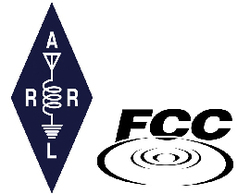 allowed to transmit data on 40 meters and have no operating authority on 20 meters.
allowed to transmit data on 40 meters and have no operating authority on 20 meters..jpg)
 Visit the
Visit the  Sponsors have postponed the previously announced W8S DXpedition to Swains Island. Organizers say COVID-19 restrictions and a limited number of flights in the first quarter of 2022 have made travel extremely difficult. Also, two W8S team members are on the 3Y0J Bouvet Island DXpedition team set for November/December 2022. "Our project has certainly not been canceled but postponed to the spring of 2023.
Sponsors have postponed the previously announced W8S DXpedition to Swains Island. Organizers say COVID-19 restrictions and a limited number of flights in the first quarter of 2022 have made travel extremely difficult. Also, two W8S team members are on the 3Y0J Bouvet Island DXpedition team set for November/December 2022. "Our project has certainly not been canceled but postponed to the spring of 2023.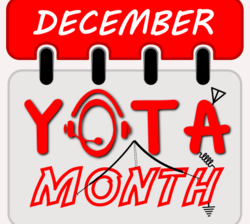 The Radio Society of Great Britain has been granted the call sign GB21YOTA for use by young operators during
The Radio Society of Great Britain has been granted the call sign GB21YOTA for use by young operators during  leaving nine dead. Search-and-rescue operations were carried out by the São Paulo Fire Department, with support from the State Civil Defense. REER-SP played an important role in providing communication between the incident command post and the rescue area, which proved difficult to access.
leaving nine dead. Search-and-rescue operations were carried out by the São Paulo Fire Department, with support from the State Civil Defense. REER-SP played an important role in providing communication between the incident command post and the rescue area, which proved difficult to access.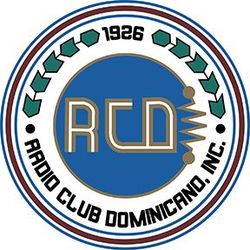 to measure the time needed to restore communication as a part of the simulation.
to measure the time needed to restore communication as a part of the simulation.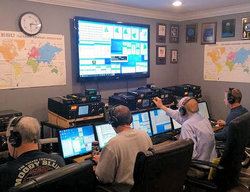
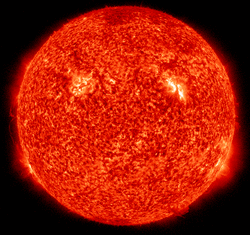 89.1. Geomagnetic indicators rose; average daily planetary A index went from 12 to 18, and middle latitude values went from 9 to 11.7.
89.1. Geomagnetic indicators rose; average daily planetary A index went from 12 to 18, and middle latitude values went from 9 to 11.7.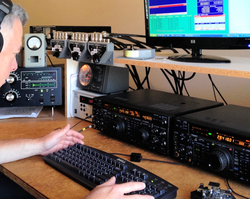 November 13 - 14 -- 10-10 International Fall Contest (digital)
November 13 - 14 -- 10-10 International Fall Contest (digital)







